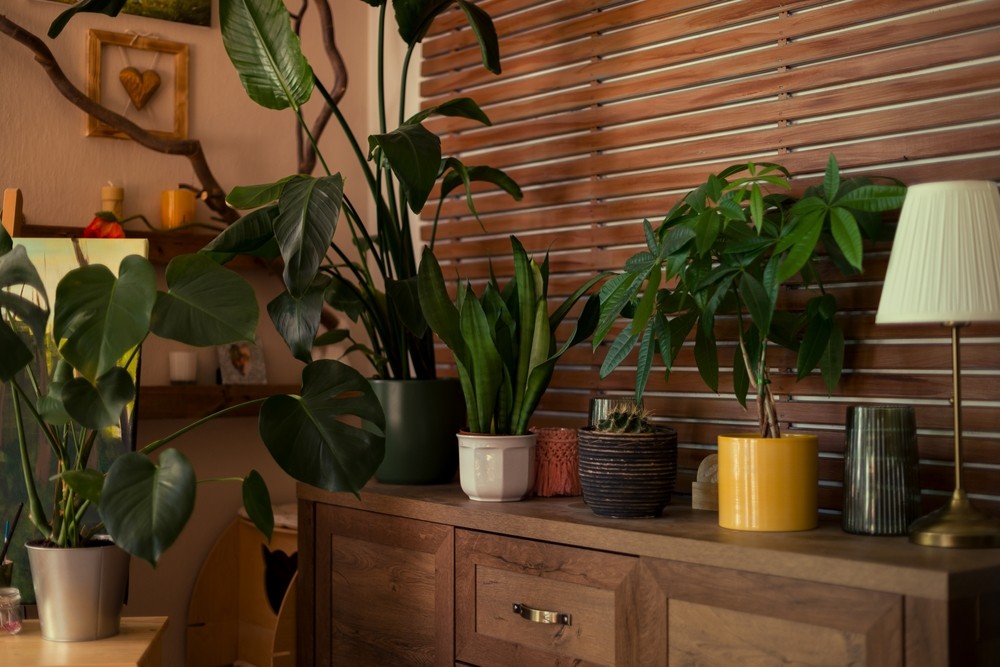Houseplants have steadily gained popularity as natural air purifiers, offering eco-friendly, aesthetically pleasing solutions to improve indoor air quality. As people seek to create healthier homes without investing in expensive filtration systems, the strategic placement of certain houseplants can serve as both a money saver and an investment in personal well-being.
The Importance of Indoor Air Quality
Understanding the significance of indoor air quality is the first step toward embracing the value of houseplants in our living spaces. Indoor air can often be more polluted than outdoor air, due to the presence of volatile organic compounds, or VOCs, emitted from various household products and activities. Common VOCs include benzene, formaldehyde, and xylene, found in products such as paints, aerosol sprays, and cleaning agents. These substances present potential health risks, contributing to issues like headaches, dizziness, or longer-term respiratory conditions. Houseplants offer an economical way to mitigate these effects, working as natural filters to absorb and neutralize toxins, while also releasing oxygen back into the environment.
Top Houseplants for Air Quality Improvement
The following is a carefully curated list of houseplants known for their air-purifying properties.
- Snake Plant (Sansevieria trifasciata)
- Peace Lily (Spathiphyllum)
- Bamboo Palm (Chamaedorea seifrizii)
- Spider Plant (Chlorophytum comosum)
- Boston Fern (Nephrolepis exaltata)
- Rubber Plant (Ficus elastica)
- Aloe Vera (Aloe barbadensis miller)
- Golden Pothos (Epipremnum aureum)
Perhaps one of the most notorious houseplants for purifying air, the Snake Plant, also known as Mother-in-Law’s Tongue, is exceptionally hardy and easy to care for. This plant is renowned for removing toxins such as formaldehyde, benzene, and trichloroethylene from the air. The Snake Plant also has the unique ability to convert carbon dioxide into oxygen at night, making it an excellent choice for bedrooms to improve sleep quality. Its vertical growth and striking appearance add an architectural element to any room without requiring much maintenance, making it ideal for people with busy lifestyles or limited gardening experience.
The Peace Lily is elegant, with dark green leaves and striking white flowers that can brighten any space. This plant excels in removing a variety of toxins, including ammonia – often used in cleaning products. Despite its delicate appearance, the Peace Lily is known for its resilience and low maintenance requirements. It thrives in shaded areas and low light, requiring only moderate watering to prevent the soil from drying out completely. Its air-purifying qualities coupled with its visual appeal make the Peace Lily a favored addition to many homes.
Ideal for adding a tropical touch to indoor spaces, the Bamboo Palm is adept at filtering out formaldehyde and benzene. This plant thrives in indirect light and requires consistent watering to maintain soil moisture. Its ability to grow several feet tall, along with its air-cleansing properties, makes the Bamboo Palm an effective green barrier against pollution in residential and office environments. While it requires a bit more space, its lush, green fronds can transform any room into a serene, jungle-like retreat.
Renowned for being both easy to propagate and robust, the Spider Plant is a perfect option for those who want to fill their homes with greenery without a hefty time commitment. It’s particularly effective at eliminating formaldehyde and xylene from indoor air. The Spider Plant’s trailing, spidery offshoots add movement and texture to rooms, creating a whimsical, yet cohesive look in hanging baskets or elevated planters. It thrives in bright, indirect sunlight and requires moderate watering, emphasizing its versatility as a household staple for air purification.
Boston Ferns are well-loved not only for their classic elegance but also for their high efficiency in removing pollutants like formaldehyde and xylene. Known for their feathery, lush fronds, these ferns require slightly more care than other houseplants, preferring high humidity and indirect sunlight. Regular misting and consistent watering help maintain their fronds’ vibrancy. Despite their care needs, their air-purifying abilities and visual impact make them a worthwhile investment for any home.
With its glossy, deep-green leaves, the Rubber Plant brings a bold, tropical element indoors while effectively removing toxins from the air. It is particularly adept at filtering out formaldehyde. This plant requires bright, indirect light and moderate watering, with occasional foliage wiping to maintain its luster and dust-free surface. The Rubber Plant’s substantial leaves and upright growth make it a statement piece that simultaneously contributes to a healthier environment.
Aloe Vera is a versatile plant, prized for both its air-cleansing capabilities and skin-soothing gel found within its leaves. Although it’s relatively small compared to other air-purifying houseplants, Aloe Vera efficiently cleanses the air of formaldehyde. Its care is simple, requiring bright, direct sunlight and minimal watering – a perfect match for those who prefer low-maintenance plants with multiple uses. The gel can be harvested to treat minor cuts and burns, adding another layer of utility to this appealing plant.
Golden Pothos, or Devil’s Ivy, is notorious for being almost impossible to kill, making it the perfect plant for aspiring green thumbs. It is known for removing a variety of pollutants, including formaldehyde, benzene, and xylene. Its trailing vines can be draped along shelves or trained to climb, providing flexible design options for any room. Pothos thrives in a range of lighting conditions, from low light to bright indirect sunlight, and requires infrequent watering – an attractive choice for enhancing indoor air without demanding attention.
Enhancing Your Environment with Houseplants
Implementing houseplants into a living or workspace isn’t just about purifying the air; it’s about cultivating an environment that promotes relaxation, concentration, and well-being. The psychological benefits of houseplants, such as reduced stress and increased productivity, complement their functional role as air purifiers.
When selecting houseplants, consider factors such as available space, lighting conditions, and personal preferences in decor. While some individuals may enjoy the simplicity of a Spider Plant on a windowsill, others might prefer the lush presence of a Boston Fern in a corner nook. It is essential to match plant care requirements with one’s lifestyle, selecting varieties that align with personal schedules and dedications to plant care.
Incorporating houseplants can be an educational opportunity for families, providing children with practical lessons in responsibility and the scientific principles behind photosynthesis and environmental stewardship. Setting up a small indoor garden also encourages mindfulness, fostering patience in routine care tasks like watering, pruning, and observing growth patterns.
For consumers concerned about costs, houseplants offer a budget-friendly alternative to costly air filtration systems, with long-term benefits that extend beyond the molecules they clean. Many plants are easily propagated, allowing one to multiply their greenery and share with friends or family, creating both economic and social returns on the initial investment.
Selecting the best houseplants for your home involves a delicate balance of aesthetic pleasure and functional benefit. Making educated choices with plants known for their air-purifying qualities can transform indoor environments into ecosystems that are both healthier and more serene. While the financial savings are clear with a reduction in the reliance on electrical purifiers, the ongoing interaction with nature within one’s own home provides a priceless enhancement to quality of life.
Incorporate plants mindfully, allowing each selection to enhance both the air you breathe and the atmosphere you create; a reflection of both practical needs and personal tastes. Houseplants represent the graceful confluence of nature and nurture, presenting abundant possibilities for transforming and enriching our everyday environments.



